Capture The Castle
A new conference center, legendary Welsh hospitality and a whole lot of history are driving Cardiff’s transformation into a global meetings venue
August 29, 2019
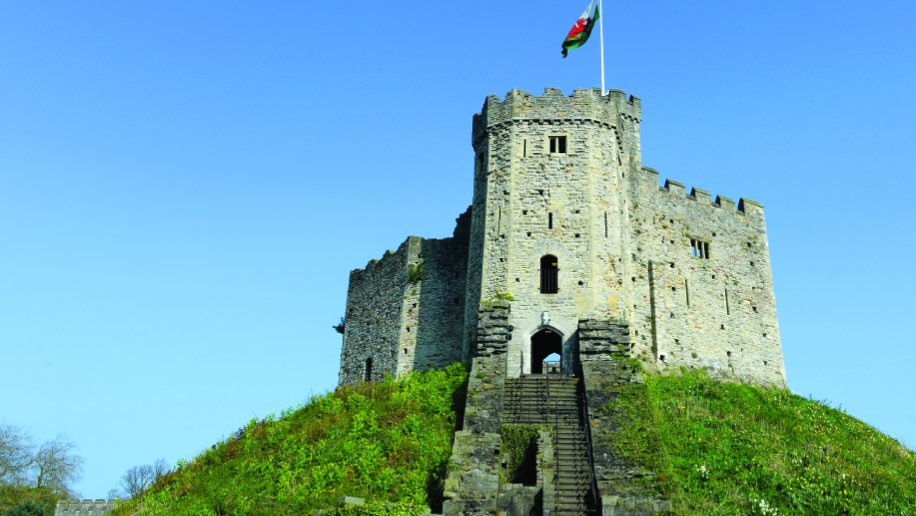
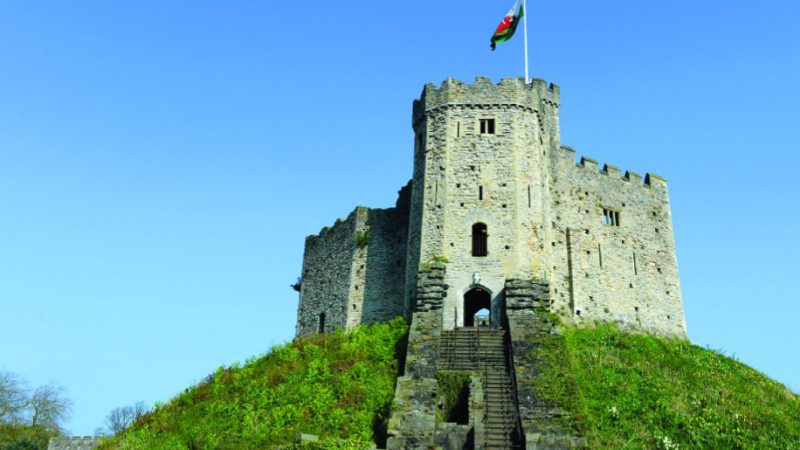
For over a decade, Cardiff has been known as a United Kingdom city success story, from its revitalized waterfront to Cardiff Castle, which was center stage hosting a banquet honoring President Barack Obama, Prime Minister David Cameron, German Chancellor Angela Merkel and the other leaders of the 2014 NATO Conference.
Familiar to American audiences for its continued high profile image as the setting for TV shows like the legendary Dr. Who, Torchwood and others, Cardiff continues to write and star in its own blockbuster.
Now, two major news stories are taking Cardiff’s magnetic appeal to a new level as a place for businesses to meet and mingle. One is the September opening of the International Convention Centre, just outside the city, attached to the famed Celtic Manor Resort (where NATO met in 2014).
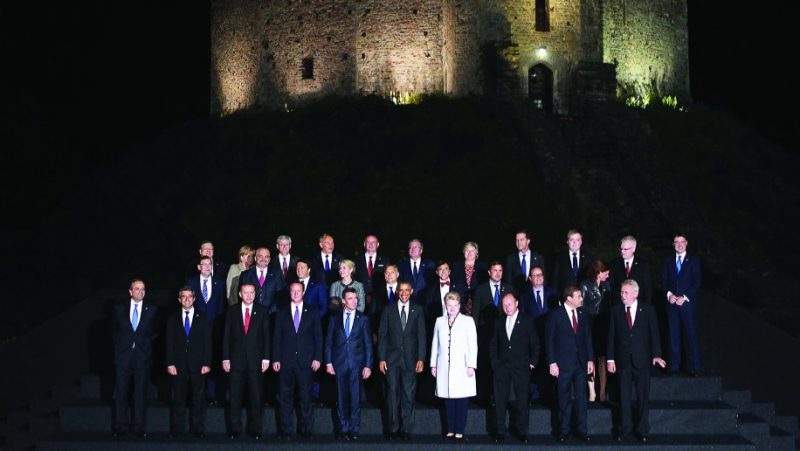
The other is the reinvention of Cardiff Airport, recently bought from a private company by the Welsh government for £52 million ($64 million). The inauguration of Qatar Airlines’ flights from Doha and a collaboration between the airline and Cardiff Airport to market Wales as a destination have been called “transformational” by airport and city officials.
“The introduction of a regular service between Cardiff and Doha has opened up a world of connectivity for customers across Wales and the southwest of England,” Deb Barber, CEO of Cardiff Airport commented recently in the UK edition of Business Traveller. “Direct flights to Qatar Airways’ hub in Doha creates onward connections to destinations across Australia, New Zealand, Asia and many more, all without the hassle of having to drive down the M4 to fly from London airports. This new and exciting service has also reaffirmed Cardiff Airport as a key gateway to the United Kingdom, ideal for visitors, international students, business travelers and expats alike.”
Cardiff has always been known as essentially accessible from all parts of the UK and Europe. For one thing, it’s a short two-and-a-half hour train ride from London. It is also one of the UK’s best connected links to Europe and the world with over 50 direct flights and 1,000 world-wide connecting destinations.
Down to Business
The city’s corporate credentials, along with its meetings bona fides, are stellar. Cardiff is one of the most competitive locations in the UK for skilled service sector businesses, and is home to companies such as Admiral. The region is also home to a flourishing advanced manufacturing sector, linking with universities delivering world-class research, and is a business hub for automotive manufacturers, including Ford and Aston Martin. Aston Martin, in fact, will soon be starting production of its first-ever electric car near Cardiff.
Cardiff also boasts a significant position in life sciences, one of Wales’ fastest growing and most innovative sectors. The city is the base for the central Life Sciences Hub, Europe’s first center for Nano-Health, and host of BioWales, one of the largest life sciences conferences in the UK.
The region is also important for technology, leading the way in the development of cyber security. Creative industries are also booming in southeast Wales: The city is home to a thriving cluster of around 10,000 creative pacesetters, and over 25,000 across the region. Companies include Bad Wolf (producers of the new Discovery of Witches TV hit, also filmed largely in Cardiff), Wild Creations, Milk and Bang.
Already chock-a-block with innovative meetings and events venues like the city center’s Cardiff Castle, the city’s boom in meetings has resulted in the building of the new International Conference Centre, a short drive from the city, adjacent to the Celtic Manor Resort.
When the Centre opens in September 2019, it will be able to host gatherings of up to 5,000 over a total floor space of more than 280,000 square feet. There’s a 1,500-seat auditorium, a 43,000-square-foot exhibition hall and the largest pillar-free ballroom in Europe, able to host 2,400 people for a gala dinner.
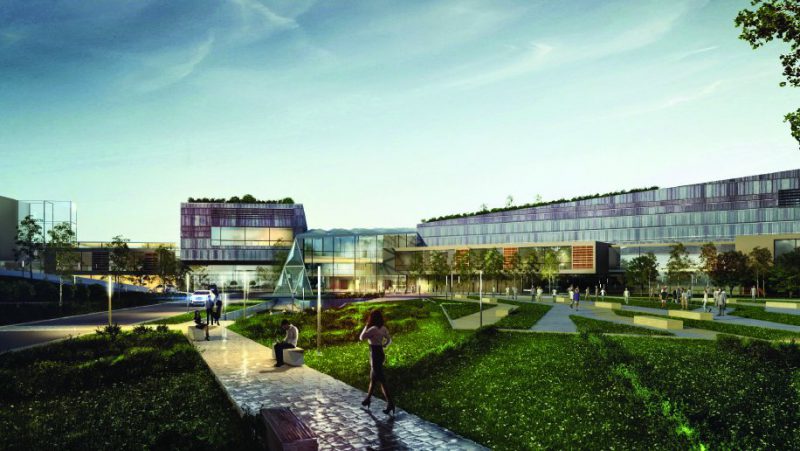
“When we open later this year, ICC Wales will be the only facility of its kind in Wales and the southwest of the United Kingdom,” notes Ian Edwards, chief executive, Celtic Manor Resort and ICC Wales. “ICC Wales is positioning itself as a leading player in the business events world and one that will be capable of competing on the world stage. The local economy is forecast to benefit by £70 million ($90 million) per annum, much of this coming from an estimated 100,000 hotel bedroom nights per year required for delegates attending conferences at the new venue.”
In addition to the Celtic Manor Resort adjacent to the ICC Wales, the new Coldra Court Hotel, is closing in on completion of a £2m ($2.2 million) refurbishment program. A further new 146-room-hotel adjacent to Coldra Court has gotten a planning nod, boosting accommodation capacity for the new ICC.
Castle Dreams
But Cardiff is definitely not all business all the time. Bleisure options abound, from a lunchtime walk around Cardiff Bay (the largest waterfront redevelopment project in Europe when it was created in the late 90s) to a visit to Cardiff Castle.
The castle, a city landmark, comprises a nest of buildings from different eras: a Norman castle keep, an ancient Roman wall and a Victorian-era mansion. The elaborately furnished Gothic Revival mansion built by the Marquess of Bute in the 1840s is tucked within an original structure created by Norman invaders built on the site of a Roman fort. The grand dining room and reception halls of the mansion, which hosted the NATO banquet, are all open to the public (and special VIP groups) for tours.
So many layers of history are showcased at the castle that it often serves as settings for film and TV shows, including Dr. Who, Sherlock and Torchwood (the castle offers a movie and TV location tour on weekends). There’s also a web of tunnels beneath the castle that were used during the Second World War for refuge during the Blitz. The castle does a 30-minute tour of the World War II-era world of the tunnels, helmed by an air-raid warden-costumed guide, also on weekends.
Climb up a spiral staircase on the Bute Tower of Cardiff Castle to find a hidden gem – the rooftop garden of the 3rd Marquess of Bute who had architect William Burgess build this urban oasis at the turn of the century. The sounds of the city fade far away in this enclosed space, meant to echo historical influences like the interior gardens of Pompeii. Take a deep, green breath and catch the lilt of the distinctive Welsh accent. Locals meet here to soak up the peace and tranquility, high up from Cardiff’s street scene.
Exploring Far & Wide
Cardiff’s eating venues are also legendary, so many that recent foodie safaris to the city are thriving (lovingwelshfood.co.uk is a major source for the best of these). Bleisure travelers are packing the halls of food emporiums like The Clink (theclinkcharity.org), a unique dining experience in the grounds of a working Category B prison.
Prisoners participating in the restaurant’s training program prepare dishes using fresh, seasonal ingredients and the latest cooking techniques. There’s just one catch: no wine list or alcohol as it is banned on prison premises. The food at The Clink has gotten critical acclaim and its program has changed lives.
Other venues to explore (which also host meeting and events) include the open air museum Saint Fagans National History Museum just outside Cardiff. This 100-acre space interprets the history of Wales through over 40 original buildings and complexes that show how real people lived from medieval times to the present.
The museum has been assembled on the site of Saint Fagans Castle and Gardens, an equally grand 16th century manor house furnished in Downton Abbey-era style and currently also open to the public. The buildings of St. Fagans are mostly original period dwellings, work and worship places and have been transported intact from their original locations to be preserved and visited within the tranquility of the museum’s 100 walkable acres of manicured parkland – so a visit to Saint Fagans is actually a visit to over 40 mini museums.
The buildings include a working blacksmith forge, a potter, a weaver, miller and a clog maker. There are also two working water mills – a flour mill and a woolen mill where visitors can shop for traditional crafts including Welsh shawls and other woolen goods made on centuries-old looms, as well as baked goods made on site with fresh locally sourced ingredients. The museum complex is large enough for an afternoon outing or a briefer visit. The main museum building, an interpretive center, has reopened after enhanced visitor upgrades, and new VIP experiences are also on offer.
Horizons Sing
Also worth a visit are the National Assembly of Wales, where Wales governs itself, and the Wales Millennia Centre, located in the heart of Cardiff Bay. The massive entertainment complex covers 4.7 acres and comprises one large theatre and two smaller venues as well as shops and lively bars and restaurants.
The monumental inscription on the front of the dome reads in English, “In These Stones, Horizons Sing.” The Welsh is translated, “Creating Truth Like Glass From Inspiration’s Furnace.” Both are the words of Welsh writer Gwyneth Lewis, who was the inaugural National Poet of Wales from 2005-2006.
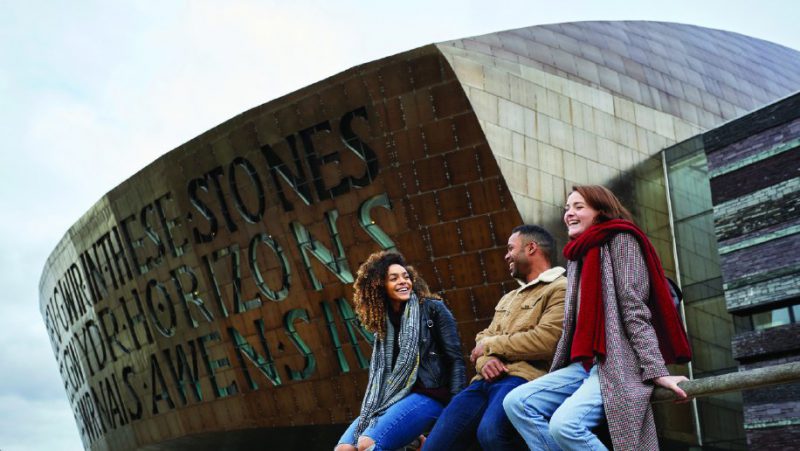
“I wanted the words to reflect the architecture of the building,” Lewis has said in her blog. “Its copper dome reminded me of the furnaces from Welsh industrial heritage and also Ceridwen’s cauldron, from which the early poet Taliesin received his inspiration (‘awen’). ‘Awen’ suggests both poetic inspiration and the general creative vision by which people and societies form their aspirations.”
Other visit-worthy venues around Cardiff include the Royal Mint Experience where money is made and which offers VIP meeting space and alfresco dinner offerings for 250 people in its Piazza. And a half hour outside Cardiff, there’s the legendary Penderyn Whisky Factory, Wales’ only distillery, famed for it its Single Malt Whisky. Here bleisure travelers or VIP incentive groups can join a master class and make some of their own “Welsh Gold.”




